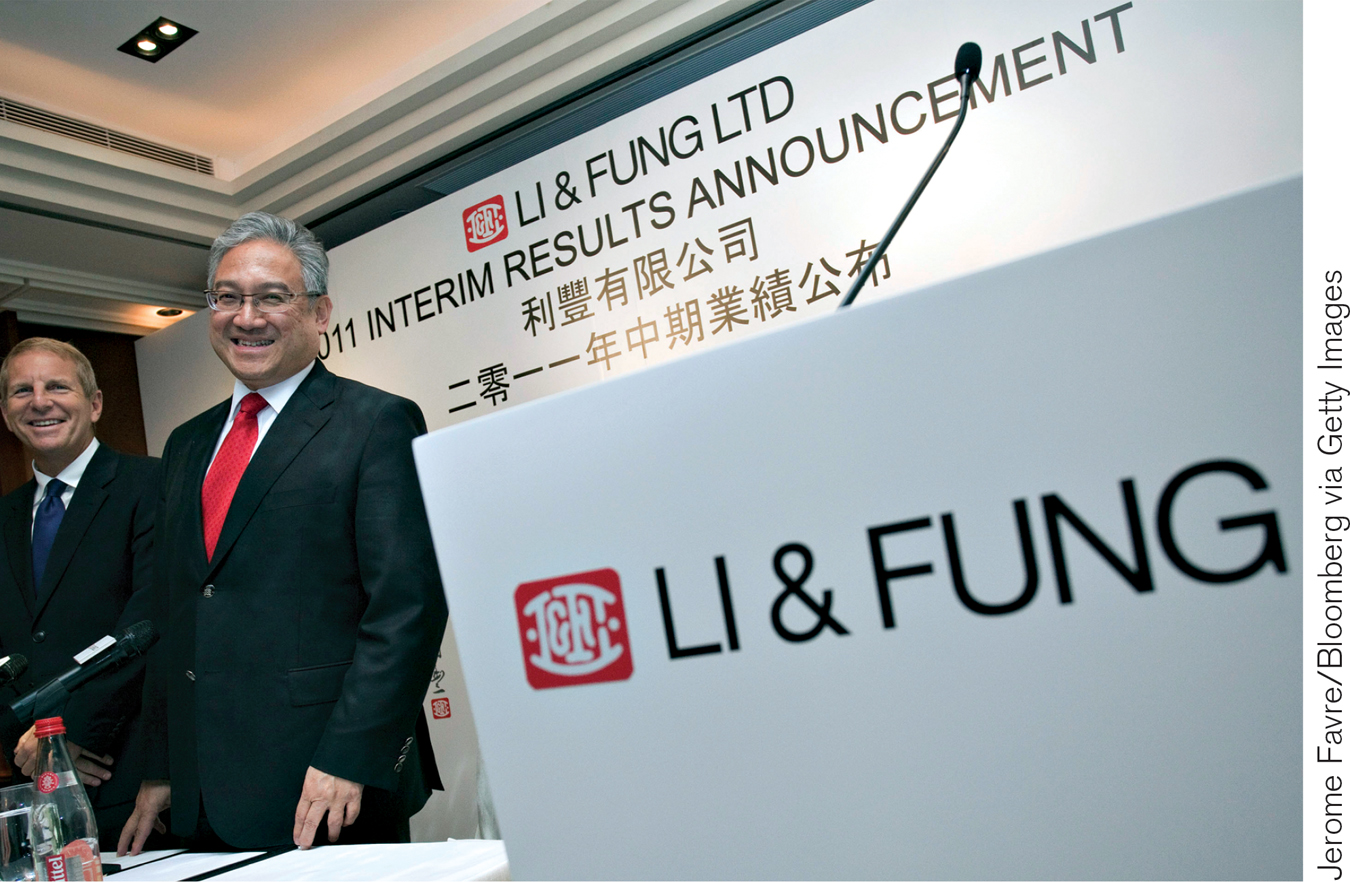Challenges to Globalization
The forward march of globalization over the past century is generally considered a major political and economic success. Economists and policy makers alike have viewed growing world trade, in particular, as a good thing. We would be remiss, however, if we failed to acknowledge that many people are having second thoughts about globalization. To a large extent, these second thoughts reflect two concerns shared by many economists: worries about the effects of globalization on inequality and worries that new developments, in particular the growth in offshore outsourcing, are increasing economic insecurity.
Globalization and Inequality We’ve already mentioned the implications of international trade for factor prices, such as wages: when wealthy countries like the United States export skill-
Trade with China, in particular, raises concerns among labor groups trying to maintain wage levels in rich countries. Although China has experienced spectacular economic growth since the economic reforms that began in the late 1970s, it remains a poor, low-
Outsourcing Chinese exports to the United States overwhelmingly consist of labor-
Offshore outsourcing takes place when businesses hire people in another country to perform various tasks.
Now, modern telecommunications increasingly make it possible to engage in offshore outsourcing, in which businesses hire people in another country to perform various tasks. The classic example is call centers: the person answering the phone when you call a company’s 1-
Although offshore outsourcing has come as a shock to some U.S. workers, such as programmers whose jobs have been outsourced to India, it’s still relatively small compared with more traditional trade. Some economists have warned, however, that millions or even tens of millions of workers who have never thought they could face foreign competition for their jobs may face unpleasant surprises in the not-
Concerns about income distribution and outsourcing, as we’ve said, are shared by many economists. There is also, however, widespread opposition to globalization in general, particularly among college students. In 1999, an attempt to start a major round of trade negotiations failed in part because the WTO meeting, in Seattle, was disrupted by antiglobalization demonstrators. However, the more important reason for its failure was disagreement among the countries represented. Another round of negotiations that began in 2001 in Doha, Qatar, and is therefore referred to as the “Doha development round.” By 2008 it had stalled, mainly due to disagreements over agricultural trade rules. As of 2014 there was little sign of progress although the round was still being officially negotiated.

What motivates the antiglobalization movement? To some extent it’s the sweatshop labor fallacy: it’s easy to get outraged about the low wages paid to the person who made your shirt, and harder to appreciate how much worse off that person would be if denied the opportunity to sell goods in rich countries’ markets. It’s also true, however, that the movement represents a backlash against supporters of globalization who have oversold its benefits. Countries in Latin America, in particular, were promised that reducing their tariff rates would produce an economic takeoff; instead, they have experienced disappointing results. Some groups, such as poor farmers facing new competition from imported food, ended up worse off.
Do these new challenges to globalization undermine the argument that international trade is a good thing? The great majority of economists would argue that the gains from reducing trade protection still exceed the losses. However, it has become more important than before to make sure that the gains from international trade are widely spread. And the politics of international trade are becoming increasingly difficult as the extent of trade has grown.
!worldview! ECONOMICS in Action: Beefing Up Exports
Beefing Up Exports

In December 2010, negotiators from the United States and South Korea reached final agreement on a free-
What made this deal possible? Estimates by the U.S. International Trade Commission found that the deal would raise average American incomes, although modestly: the commission put the gains at around one-
These overall gains played little role in the politics of the deal, however, which hinged on losses and gains for particular U.S. constituencies. Some opposition to the deal came from labor, especially from autoworkers, who feared that eliminating the 8% U.S. tariff on imports of Korean automobiles would lead to job losses. But there were also interest groups in America that badly wanted the deal, most notably the beef industry: Koreans are big beefeaters, yet American access to that market was limited by a 38% Korean tariff.
And the Obama administration definitely wanted a deal, in part for reasons unrelated to economics: South Korea is an important U.S. ally, and military tensions with North Korea were ratcheting up even as the final negotiations were taking place. So a trade deal was viewed in part as a symbol of U.S.–South Korean cooperation. Even labor unions weren’t as opposed as they might have been; the administration’s imposition of tariffs on Chinese tires, just described in For Inquiring Minds, was seen as a demonstration that it was prepared to defend labor interests.
It also helped that South Korea—
Quick Review
The three major justifications for trade protection are national security, job creation, and protection of infant industries.
Despite the deadweight losses, import protections are often imposed because groups representing import-
competing industries are more influential than groups of consumers. To further trade liberalization, countries engage in international trade agreements. Some agreements are among a small number of countries, such as the North American Free Trade Agreement (NAFTA) and the European Union (EU). The World Trade Organization (WTO) seeks to negotiate global trade agreements and referee trade disputes between members.
Resistance to globalization has emerged in response to a surge in imports from relatively poor countries and the offshore outsourcing of many jobs that had been considered safe from foreign competition.
5-4
Question 5.7
In 2002 the United States imposed tariffs on steel imports, which are an input in a large number and variety of U.S. industries. Explain why political lobbying to eliminate these tariffs is more likely to be effective than political lobbying to eliminate tariffs on consumer goods such as sugar or clothing.
There are many fewer businesses that use steel as an input than there are consumers who buy sugar or clothing. So it will be easier for such businesses to communicate and coordinate among themselves to lobby against tariffs than it will be for consumers. In addition, each business will perceive that the cost of a steel tariff is quite costly to its profits, but an individual consumer is either unaware of or perceives little loss from tariffs on sugar or clothing. The tariffs were indeed lifted at the end of 2003.
Question 5.8
Over the years, the WTO has increasingly found itself adjudicating trade disputes that involve not just tariffs or quota restrictions but also restrictions based on quality, health, and environmental considerations. Why do you think this has occurred? What method would you, as a WTO official, use to decide whether a quality, health, or environmental restriction is in violation of a free-
trade agreement? Countries are often tempted to protect domestic industries by claiming that an import poses a quality, health, or environmental danger to domestic consumers. A WTO official should examine whether domestic producers are subject to the same stringency in the application of quality, health, or environmental regulations as foreign producers. If they are, then it is more likely that the regulations are for legitimate, non–trade protection purposes; if they are not, then it is more likely that the regulations are intended as trade protection measures.
Solutions appear at back of book.
Li & Fung: From Guangzhou to You
It’s a very good bet that as you read this, you’re wearing something manufactured in Asia. And if you are, it’s also a good bet that the Hong Kong company Li & Fung was involved in getting your garment designed, produced, and shipped to your local store. From Levi’s to The Limited to Walmart, Li & Fung is a critical conduit from factories around the world to the shopping mall nearest you. The company was founded in 1906 in Guangzhou, China. According to Victor Fung, the company’s chairman, his grandfather’s “value added” was that he spoke English, allowing him to serve as an interpreter in business deals between Chinese and foreigners. When Mao’s Communist Party seized control in mainland China, the company moved to Hong Kong. There, as Hong Kong’s market economy took off during the 1960s and 1970s, Li & Fung grew as an export broker, bringing together Hong Kong manufacturers and foreign buyers.
The real transformation of the company came, however, as Asian economies grew and changed. Hong Kong’s rapid growth led to rising wages, making Li & Fung increasingly uncompetitive in garments, its main business. So the company reinvented itself: rather than being a simple broker, it became a “supply chain manager.” Not only would it allocate production of a good to a manufacturer, it would also break production down, allocate production of the inputs, and then allocate final assembly of the good among its 12,000+ suppliers around the globe. Sometimes production would be done in sophisticated economies like those of Hong Kong or even Japan, where wages are high but so is quality and productivity; sometimes it would be done in less advanced locations like mainland China or Thailand, where labor is less productive but cheaper.

For example, suppose you own a U.S. retail chain and want to sell garment-
Li & Fung has been enormously successful. In 2012 the company had a market value of approximately $11.5 billion and business turnover of over $20 billion, with offices and distribution centers in more than 40 countries. Year after year, it has regularly doubled or tripled its profits.
QUESTIONS FOR THOUGHT
Question 5.9
Why do you think it was profitable for Li & Fung to go beyond brokering exports to becoming a supply chain manager, breaking down the production process and sourcing the inputs from various suppliers across many countries?
Question 5.10
What principle do you think underlies Li & Fung’s decisions on how to allocate production of a good’s inputs and its final assembly among various countries?
Question 5.11
Why do you think a retailer prefers to have Li & Fung arrange international production of its jeans rather than purchase them directly from a jeans manufacturer in mainland China?
Question 5.12
What is the source of Li & Fung’s success? Is it based on human capital, on ownership of a natural resource, or on ownership of capital?